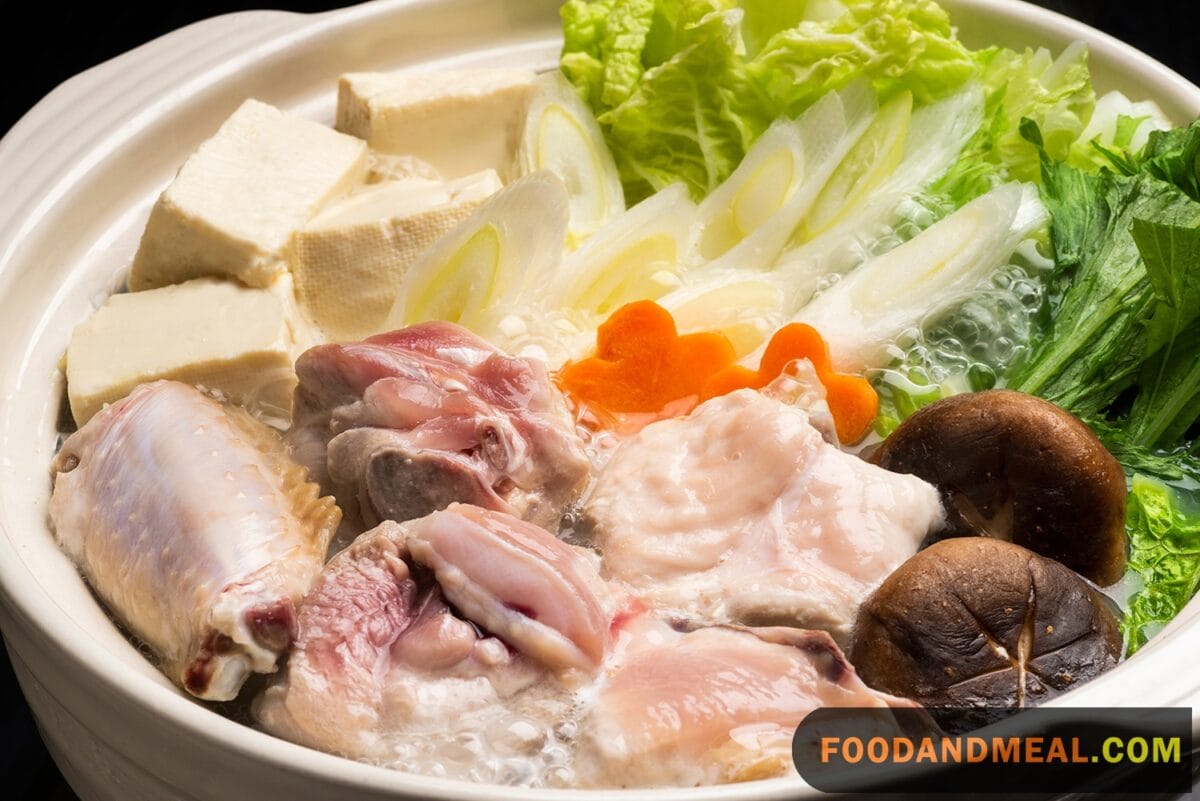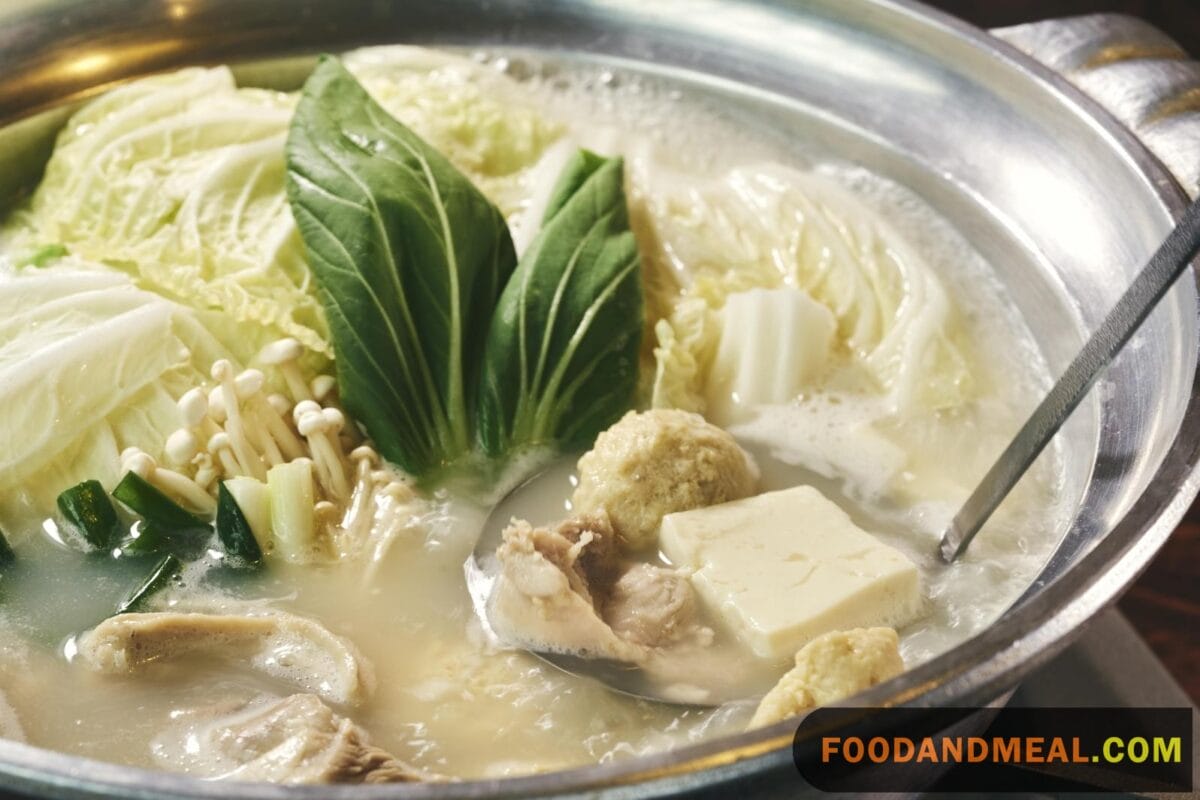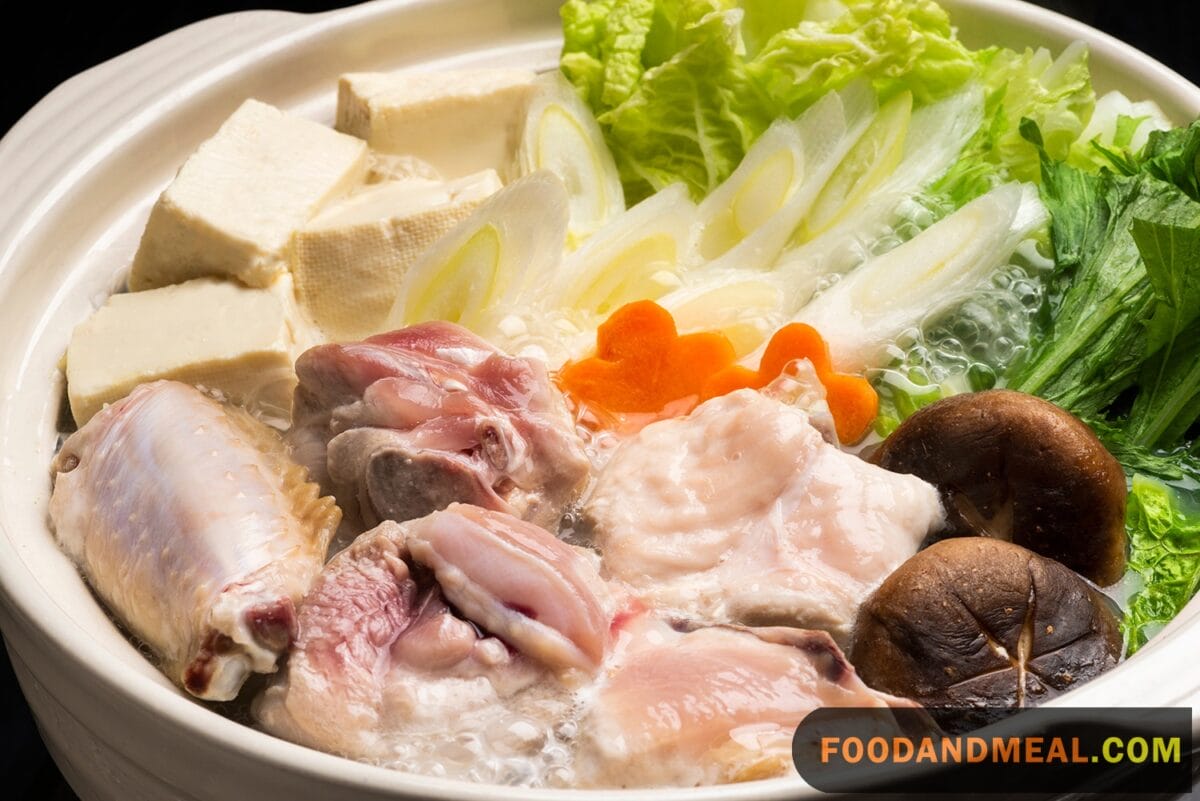As the crisp autumn air sets in, I find myself craving the rich, comforting flavors of a steaming hot pot. And nothing satisfies my soul more than Mizutaki Hot Pot – a soulful chicken and vegetable dish simmering in a savory dashi broth. Each tender bite of chicken and mushroom fills me with nostalgia for my grandmother’s kitchen on chilly weekends.
I have such fond memories gathered around her table, laughing while ingredients bubbled away in the giant pot before us. The subtle yet complex broth seeped into everything, infusing it with magical umami flavor I honestly can’t put into words. As I dip the fork-tender chicken and vegetables into bright ponzu sauce now, I’m transported right back to the warmth of her bustling stove.
Recreating these nostalgic flavors and experiences in my small city apartment is my passion. Though my hot pot may not be as perfect as my grandmother’s, it’s my way of keeping traditions alive and sharing a little piece of my childhood with those I love. I hope this soulful Mizutaki Hot Pot fills your home with the aroma of dashi, laughter of friends, and all the cozy comfort that this dish brings me.

Japanese Mizutaki Hot Pot Recipe

Japanese Mizutaki Hot Pot
Ingredients
Ingredient List:
- 1 piece of kombu, large (edible kelp)
- 1/2 wedge-cut head of leaf cabbage, Napa
- 6 sliced, skinned chicken thighs, boneless
- 2 diagonally sliced leeks
- 1 peeled, cut into tiny pieces carrot, large
- 3 1/2 oz. of sliced mushrooms, shiitake
- 1 handful sprouting broccoli
- Optional: glass noodles
- 32 fl. oz. or less of chicken stock, light
- Salt, sea
For ponzu dipping sauce:
- 3 1/2 fl. oz. of soy sauce, dark
- 1 3/4 fl. oz. of vinegar, brown rice
- 1 3/ fl. oz. of lemon juice or yuzu
- 1 lemon, grated zest only
Instructions
- Lay kombu in casserole base. Cover with cabbage. This creates a base for the rest of the ingredients, making it easier to arrange them.
- Divide the pot in your mind into six sections. Arrange noodles and four vegetable types over cabbage, keeping them apart from each other.
- Pour stock gradually over till it has reached the top of noodles and veggies. Do not immerse them completely. Season them with salt. Cover. Bring to simmer.
- Simmer for 7-10 minutes, till all is cooked completely through.
- To prepare dipping sauce, combine ingredients listed above under ponzu sauce.
- Pass around chopsticks and small bowls so everyone can help themselves.
- Each person can dip the meat into the broth to cook it. Have dipping sauce handy.
Video
Notes
- Broth Tips: The soul of Mizutaki lies in its broth. A good bone broth takes time, so be patient. If you're in a hurry, store-bought can work, but making it from scratch is where the magic truly lies. Looking for a detailed broth guide? Dive into our extensive collection on mastering broths here.
- Vegetable Choices: Mizutaki is versatile. Feel free to add or replace with veggies of your liking. Shiitake mushrooms or Napa cabbage are classics! Craving more Japanese veggie delights? Check out our curated list here.
- Serving Ritual: Mizutaki is best enjoyed with friends and family. Once cooked, transfer ingredients to individual bowls and pour over the hot broth. The shared experience amplifies the flavors. Yearning for more communal dining ideas? Discover our favorites in this special collection.
Nutrition
© Food And Meal
This website provides approximate nutrition information for convenience and as a courtesy only. Nutrition data is gathered primarily from the Spoonacular Database, whenever available, or otherwise other online calculators.
Mizutaki Hot Pot Using a Pressure Cooker
In the swift and organized preparation for Mizutaki Hot Pot, ingredients are readied. The pressure cooker takes the lead, crafting a rich base broth with chicken, green onions, and water. After a careful release and skimming of impurities, soy sauce enhances the flavor profile. Napa cabbage, carrots, and shiitake mushrooms join, followed by a gentle pressure cook. Tofu cubes and clear noodles dance in the residual heat, creating a symphony of flavors. Transferred to individual bowls, the hot broth cascades over each serving. Optional ponzu sauce and grated daikon radish provide a zesty finale. Mizutaki perfection unfolds in a warm and rich dining experience.
Cooking Tips for Mizutaki Hot Pot

The heart of Mizutaki lies in its broth, where chicken and green onions intertwine in the pressure cooker, creating a symphony of flavors during the 20-minute cook. As the pressure releases and impurities are gently skimmed away, the addition of soy sauce becomes a personal touch, a subtle artistry in perfecting the broth’s nuanced complexity.
Layering in Napa cabbage, carrots, and shiitake mushrooms follows, turning the subsequent 10-minute pressure cook into a serene interlude. Each vegetable adds its unique texture, contributing to the harmonious melody of the pot.
The grand finale introduces tofu cubes and clear noodles, gracefully immersing in the residual heat like a delicate bow, ensuring that each bite resonates with perfection. Transferring Mizutaki to individual bowls becomes a moment of shared anticipation, and as the hot broth pours over each serving, it feels like a comforting embrace.
Serving Suggestions for Mizutaki Hot Pot

The rich, savory flavors of Mizutaki Hot Pot would pair deliciously with a variety of light, refreshing sides. For a crisp contrast, I would suggest Daikon Salad, Tofu Teriyaki, or Scallion Salad. The bright, crisp vegetables would offset the hearty dashi broth perfectly.
If you want something hearty alongside the hot pot, Yakisoba, Yaki Udon or Beef Stir Fry would complement the chicken and mushrooms wonderfully. The gingery noodles or savory beef would make excellent comfort food accompaniments.
And for soaking up every last drop of that delicious broth, Steamed Rice, Mochi, or Fluffy Rolled Omelette can’t be beat! Enjoy with Miso Soup for a soothing, traditional Japanese-style meal.
5 FAQs about Mizutaki Hot Pot

- Can I use other types of meat for Mizutaki Hot Pot? Absolutely! While chicken is traditional, you can use thinly sliced beef, lamb, or even seafood. Adjust cooking times accordingly, especially for seafood, as it cooks quickly.
- How do I store leftovers? Cool the leftover Mizutaki Hot Pot to room temperature, then transfer it to an airtight container. Store in the refrigerator for up to 2-3 days. For longer storage, you can freeze the broth and meat separately for up to a month.
- Can I prepare Mizutaki Hot Pot in advance? Certainly. You can prepare the broth a day in advance. On the day of serving, just reheat the broth and add the fresh ingredients.
- Are there vegetarian or vegan versions of Mizutaki? Yes, you can substitute the chicken with tofu or an assortment of mushrooms like shiitake, enoki, and oyster mushrooms. Use a vegetable broth or kombu (seaweed) based broth for a vegan version.
- My broth lacks depth. How can I enrich it? Depth in broth often comes from simmering over a long period. If you’re short on time, try adding a splash of soy sauce, a piece of kombu, or a few dried shiitake mushrooms during the simmering process. Removing them before serving can enhance the depth of your broth.
Conclusion
I hope this recipe for Mizutaki Hot Pot transports you to the cozy warmth of my grandmother’s kitchen table, filled with the aroma of dashi broth and laughter of family. Though my version may not be exactly like hers, I do my best to recreate those nostalgic flavors and memories. I’m so happy to be able to share this soulful, comforting dish with the Food And Meal community.
If you make this hot pot at home, I’d love to see your creations and hear how it turned out! Please share photos and tag @foodandmeal on social media so I can take a peek into your kitchens. And feel free to leave a comment below letting me know what ingredients you added to make this dish your own. I can’t wait to see the unique spins you put on this classic.
Hi! I'm Nazia of ‘Nazia Cooks’, a self-taught baker and cook residing in Chennai. Rooted in the rich South Indian culinary landscape, my palate has expanded to embrace global flavors. I revel in crafting fusion dishes, melding traditions to birth unique tastes.



